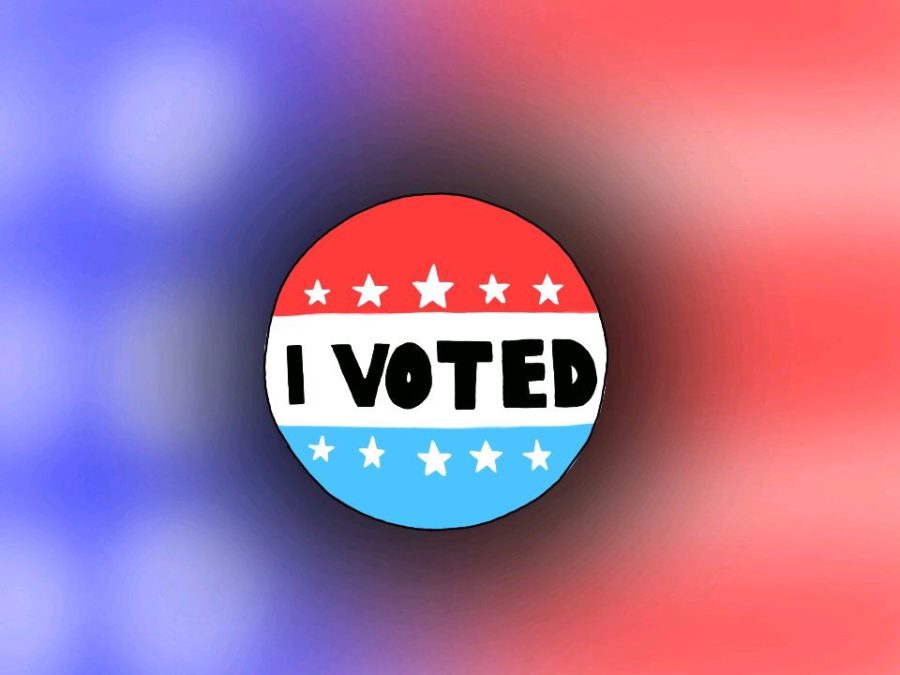Midterm Elections: Researching and Voting Responsibly
Students who go out to the polls should wear their “I Voted” sticker with pride.
October 26, 2018
It’s a well known fact that the midterm elections are quickly approaching. With so many TV and social media advertisements, it’s hard to miss. But how can one sort through the seemingly infinite yard signs to support candidates with a clear conscience?
Ensuring that the American government is making decisions on behalf of the citizens requires the voters to show up to the polls. Unfortunately, voter turnout is especially low when it comes to midterm elections. Only about 40% of those eligible to vote actually cast their ballots, according to FairVote.org. League of Women Voters volunteer, Sandra Golob, urges, “It is of utmost importance to vote, now more than ever. Voting allows you to shape legislation and show lawmakers your opinions. Every vote counts especially in local elections.”
Unlike the Presidential elections, midterms are decided by the popular vote; subsequently, people are forced to think beyond party and break down the walls or polarized politics. Alex Burns, a contributor to The Edit, a New York Times publication, puts it this way: “In a regular election people are more polarized and have made up their minds a little bit. In the midterm, people behave in an unpredictable way and reveal things about themselves in a way you don’t get in a choice between a Democrat or Republican presidential candidate.”
But how do you make sure you’re voting for the candidate you believe in? Take every political ad you see with a grain of salt. Don’t let the dark imagery and the dramatic rhetoric sway you. Take who approved the message or paid for it into consideration. In the end, you should base your decision off of candidates’ claims and positions. Reliable information on each candidate can be found at Vote411.org. You can easily find a personalized list of candidates and their stances on a wide variety of issues there.
Getting an idea of what your ballot will look like isn’t hard either. A sample ballot can be found on the Minnesota Secretary of State’s website. This can give you a better idea of what to expect when you get to your polling place on November 6. Registering to vote is just as easy. One has to be 18 years of age, free of all felony charges, and a Minnesota resident for at least twenty days.
For the vast majority of students, this is their first time at the polls. Onalee Erickson, ‘19, has anticipated voting for years. “I want to vote in November because my entire life my dad has been talking to me about politics and I have waited for the opportunity to put my opinions into action by voting for who I believe is the best candidate.”
Sadly, voting is a right that many in this country take for granted. Golob emphasizes that, “We [Americans] are so lucky to be able to vote in this country. It’s a real shame that so few people get out to the polls when so many around the world can’t.” Although the right to vote has been fundamental to American democracy ever since its founding, women won the right to vote only less than a hundred years ago. You can honor those who fought for your rights by exercising them this November.
So I encourage you to take your beliefs into your own hands. Register, research and grace that ballot box with your opinions because they matter.






























